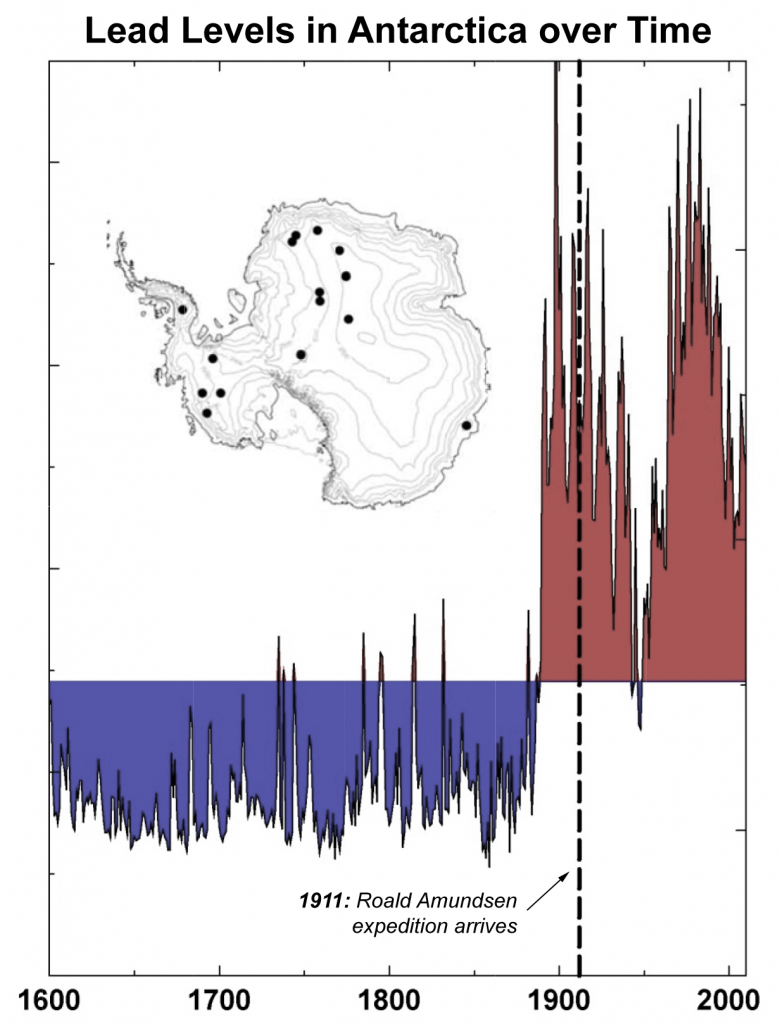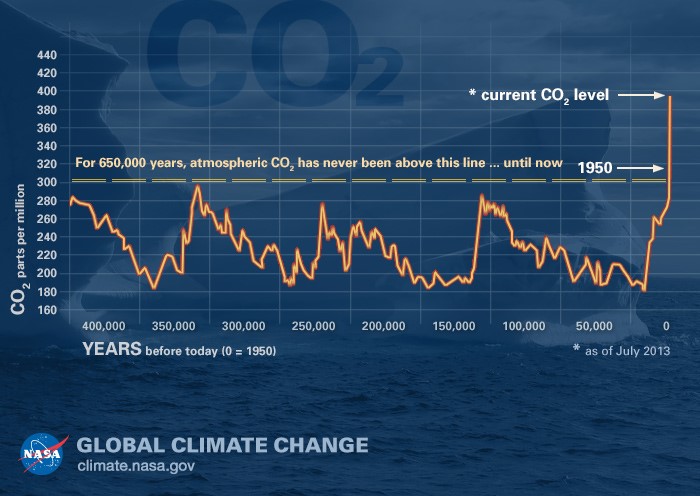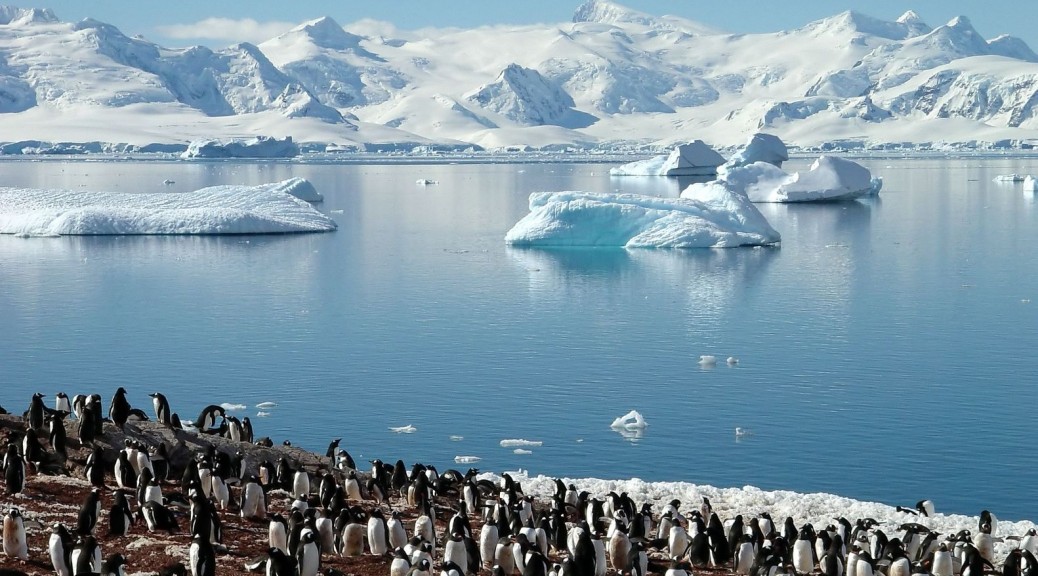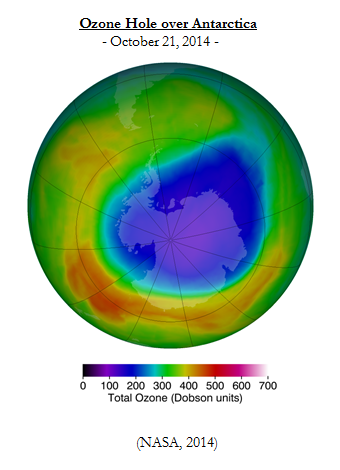Author: Daniel T. Gieseke | December 2014
Abstract
Antarctica, a continent devoid of permanent human settlement, is largely affected by anthropogenic pollution. In 1959 Antarctica was established as an international center for science and research, which led international teams to conduct research on the continent. Contemporary scientists on and around the continent have observed pollution as it affects the domestic wildlife, hydrology, climate, and surrounding oceans. Due to Antarctica’s status as an international area, Antarctic pollution is a result of internal, but mostly external pollution. Studying pollution as it affects Antarctica may demonstrate the international coordination that facilitates the degradation of the area. Further research will lead to an understanding as to where the pollution originates, as well as the international coordination needed to ameliorate the degradation. Antarctic pollution issues require research to be conducted on external pollution rates as they affect not only Antarctica, but contemporary global systems. Exposing the pollution in Antarctica will demonstrate how pollution affects not just a domestic area, but the world at large. Within this case study I will document contemporary pollution issues in Antarctica, external sources of pollution, and the sources that project the most harm to the Antarctic environment.
Key Words: Antarctic Treaty, Antarctica, CO2, Lead, Ozone Depletion, Solid Waste
Introduction:
Antarctica is plagued by anthropogenic pollution, but curiously the continent is devoid of permanent human settlement as the region is inhabitable by people. Ozone degradation, heightened CO2 levels, increased lead concentrations, and tangible human waste litter the Antarctic region. The degradation in the Antarctic region is a result of internal, yet mostly external anthropogenic activities from international agents. Spikes in pollutants around the region directly correspond to the international use of pollutants such as lead, fossil fuels, and Chlorofluorocarbons (CFCs). Whether it be the documented increase in lead concentrations that fluctuated with the industrial revolution, or the growing hole in the Ozone Layer that has been a proven result of international CFC usage, the pollution in Antarctica is mostly a result of external activities from several nations.
Antarctic Politics:
In 1959, Antarctica was established as an international area dedicated to science and research. Several nations including Argentina, France, Japan, the United Kingdom, and the United States signed the Antarctic Treaty. The treaty specifically states that the continent “shall continue forever to be used exclusively for peaceful purposes and shall not become the scene or object of international discord;” (Treaty, The Antarctica, 1959). The treaty contains 14 articles which establish key elements essential to peaceful international coordination on the continent. Some examples include a ban on military intervention, peaceful scientific research, international information exchange from research on the continent, no territorial sovereignty, and the application of the treaty to all areas south of the 60 degree latitude line in the southern hemisphere. The treaty created a continent that disregards sovereignty, and dedicates an area to international coordination and scientific progress. (Treaty, The Antarctic, 1959)
The Antarctic Treaty of 1959 further illustrates that Antarctic pollution observed internally is the result of external international agents. The documentation of littered oil drums, sewage, and discarded human pollutants are the result of temporary human occupation on the continent from international organizations. The internal pollution in the Antarctic region, thus, is the result of not just one nation, but those nations that are conducting research in the area.
There have also been other international conferences regarding Antarctic environmental degradation since 1959. The Protocol on Environmental Protection to the Antarctic Treaty was instated in 1991. The protocol accompanied the Antarctic Treaty and was signed by multiple nations. The protocol asks the international community to cooperate in activities upheld in Antarctica such that the effects of those activities do not further degrade the continent and its environment. The protocol states that if an activity degrades the Antarctic environment, the country responsible would be responsible for the needed clean up. The treaty also established the Committee for Environmental Protection to Antarctica (United States, 1992). International cooperation and compliance is needed to sustain Antarctica.
Before the 1991 Protocol on Environmental Protection, the Montreal Protocol established necessary international regulations that would serve to be beneficial to the Antarctic environment. CFCs and other aerosols would be limited in use internationally under the Montreal protocol in 1987 (See section titled “Hole in the Ozone Layer”). The protocol’s mission was to eliminate ozone depletion through reducing the usage of substances that facilitated the ozone hole over Antarctica. Not every nation agreed to the protocol, but after the implementation of the protocol in 1989, CFC and other aerosol usage lessened to a great extent. (“The Montreal Protocol”, 1987)
The 2001 Stockholm Convention created international guidelines that would limit international usage of persistent organic pollutants (POPs). POPs are chemicals that are dispersed internationally, and pose a significant threat to human and environmental health. The Stockholm Convention provided provisions to its signatories to eliminate/prohibit the usage of POPs in any sector. The convention further went to state that each party signing the treaty agrees to search out sites of potential POPs and reduce the risk of exposure. POPs effect Antarctica to a large extent due to the global distillation process called the “grasshopper effect” (see section titled “Exacerbation from the Grasshopper Effect”). (“Overview”, 2008)
Hole in the Ozone Layer:
The Ozone Layer is a stratospheric layer of O3 around the earth which has been depleted. The Ozone Layer provides the earth with protection from harmful ultra violet radiation. Within the past few decades, scientists have found a decreased concentration of ozone above Antarctica. The National Science Foundation to the United States provides information and background on the science behind the Ozone Layer and its depletion. Accordingly, the ozone layer is affected by small particulates such as CFCs and other aerosols. These particulates destroy ozone during cold Antarctic winters when stratospheric clouds form, harboring small particulates, which are mostly human induced. (National Science Foundation) Where stratospheric ozone protects the earth from UV rays, tropospheric ozone is an agent in photochemical smog. (“Ozone Science”, 2010)
According to information provided by the US Environmental Protection Agency, CFCs were heavily used worldwide during the 20th century. CFCs could be found in refrigerants, hairsprays, and Styrofoam; they were known as a “wonder”. Until they were found to be detrimental to the Ozone Layer in the 1980s, they were frequently used. (“Ozone Science”, 2010)
NASA is concurrently monitoring the hole in the ozone layer that has manifested. The hole has varied in size, shape, and thinness. According to the data provided by NASA, the monitoring began in 1979 and stretches to today. In 1979, the ozone hole was recorded at its lowest recorded level where it occupied an area of 1.1 million km2. Today the hole is recorded as occupying an area of 24 million km2. The hole is projected to continue fluctuating until air pollutant levels degrade over time. (“21 October 2014.”, 2014)
Lead Pollution:
Lead pollution has found its way to Antarctica. Joe McConnel of the Desert Research Institute in Reno, Nevada claims lead pollution arrived to Antarctica far before any humans made it to the South Pole. Sixteen ice core samples were obtained by Antarctic researchers that contained lead. High levels of lead appeared to manifest in Antarctica around two decades before humans arrived on the continent. This time line coincides with the Industrial Revolution. According to the research provided, 660 tons of lead made its way to Antarctica before any human laid foot on the continent. (Broglio, 2014)
The Sydney Morning Herald touches on Australia’s contribution to the lead pollution in Antarctica. The article provides a synopsis of the research conducted by Joe McConnel. The article continues to claim that most of the lead pollution found in Antarctica comes from Australian lead mining. The article provides a timeline to the pollution levels claiming it started around 1900, and continued to rise with various fluctuations until it leveled off around 1990. The article ties external anthropogenic activity with the lead concentration levels over time in Antarctica. (“Australian Lead Mining Caused Early Antarctic Pollution.”, 2014)

Lead pollution has also been found in the wildlife surrounding Antarctica. The book, Antarctic Communities and Species, gives detailed information on pollutant concentrations in mussels and other animals in Antarctica. The text documents concentrations of organochlorine pollutants in mussels found around the marine environment in Antarctica. The organochlorine pollutants documented include HCB, DDT, and CB, which are all human influenced pollutants used externally. Manganese, lead, iron, and other heavy metals have been found in the gills of bivalves living the Antarctic marine environment. The 412-page book continues to describe the effects of other pollutants found within species in Antarctica such as insects. (Berkman, 1992)
Carbon Dioxide, Global Warming, and Antarctica:
As many may know, Carbon Dioxide levels exceed sustainable levels globally. NOAA’s Carbon Dioxide Information Analysis Center (CDIAC) provides information on CO2 levels in Antarctica. CDIAC has data on three ice cores that record CO2, Methane, and Nitrous Oxides levels on the continent. The levels ranged over the last 800,000 years from 170 PPM to 300 PPM in CO2. This statistic contrasts with a recent finding of 386 PPM of CO2 in 2010. In all ice core samples, there is a shocking increase in air pollutants in the last 100 years that directly correlates to car use and an industrializing global economy. These statistics also correlate to rising global temperatures. (“800,000-year Ice-Core Records of Atmospheric Carbon Dioxide (CO2).”, nd)
The World Wildlife Fund provides plenty of information regarding the global warming impacts on both the Arctic and Antarctic regions. The organization provides information on the impacts of global warming on penguins, ice sheets, and other phenomenon that have manifested after the industrial revolution. WWF claims that the emperor penguin population could decline by 95% by the end of the 21st century. (“Global Warming Impacts in the Arctic and Antarctic.”, nd)
The National Snow and Ice Data Center has compiled data on ice sheets and their responses to global warming. According to the center, 99% of all freshwater is contained in either the Greenland or Antarctic Ice Sheets. The Antarctic Ice Sheet accounts for 30 million cubic kilometers of ice, where the Greenland Ice Sheet accounts for just 1.7 million. If the Antarctic Ice Sheet were to completely melt, sea levels would rise by 200 feet. The rate at which ice sheets melt has been found to have a correlation to rising CO2 levels. (“National Snow and Ice Data Center.”, nd)

NASA continues to research not just the ozone degradation above Antarctica, but the melting rate of the Antarctic ice sheet. According to the organization, West Antarctica is melting faster than East Antarctica. The western Antarctic ice sheet has tripled its melt rate in the last decade. Since 1992, the rate of ice sheet loss in this region has accelerated at an average rate of 6.1 extra gigatons per year, which makes the average loss each year equal to around 83 gigatons. To put this into perspective, Mt Everest is projected to weight 161 gigatons, meaning every two years western Antarctica sheds a Mt Everest of ice. (Rasmussen, 2014)
1989 Antarctic Oil Spill:
In 1989, an Argentine vessel hit a reef around Palmer Station in Antarctica and dispersed 600,000 liters of oil into the marine environment surrounding Antarctica. This oil spill was the largest ever experienced by Antarctica. Although the spill was not deemed as catastrophic as other oil spills in world history, the spill was worrisome to scientists. Oil spills harm cold climates more than others because oil globules can be retained in ice for long periods of time, and at low temperatures microbes take a far longer to degrade oil. Local resources were not as readily available to address the impact of this spill either. (“Oil Spills in the Antarctic.”, nd)
The environmental impacts of the spill were later documented. The effects took time and varied, though seabirds were those most affected. Following the spill, Adelie penguins were documents as losing an extra 16% of their population, Comorant chicks saw a nearly 100% mortality rate following the spill, and in years following the spill, Comorant nests lessened by 85%. These fluctuations in species populations could lead to other indirect impacts on the environment that may be more difficult to quantify. These statistics show the effects that anthropogenic pollution may have on other species. (Berkman, 1992)
Exacerbation from the Grasshopper Effect:
The “grasshopper effect” exacerbates the pollution that makes its way to Antarctica. The grasshopper effect moves pollutants, typically persistent organic pollutants (POPs), from warmer climates to colder Polar Regions. Molecules are evaporated at warmer climates, and settle back to the ground at colder climates where the molecules can condense out. This process leads to greater concentrations of POPs and other pollutants in polar climates. Although this system harms the Arctic region more than the Antarctic, the grasshopper effect still has the potential to move pollutants arising from the southern hemisphere to the Antarctic region. (Hund, 2014)
The POPs that make their way to Antarctica have the potential to harm the wildlife, plant life, and humans on and around the region. POPs that make their way to Antarctica are consumed by several species, and the effects are exacerbated by bioaccumulation. This means species higher in the food chain are most exposed to these pollutants because they consume organisms lower on the food chain that may already store the POPs in their fat or tissue. (Contaminants & Remediation Directorate, 2009)
International Efforts for Antarctic Sustainability:
Several nations have implemented sustainable practices domestically, as well as within Antarctica. The United Kingdom, the United States, and Australia have not only signed the Protocol for Environmental Protection to the Antarctic Treaty, they mandate specific rules for activities within their countries as well as on Antarctica. Their efforts aim to sustain the Antarctic environment.
The British Antarctic Survey (BAS) is a United Kingdom based organization dedicated to Antarctic research. To maintain the Antarctic environment, the organization provides several measures for sustainable research on the continent. All waste that is produced by the organization on Antarctica, except for sewage and food waste, is removed from the continent in a timely manner. The Environmental Protocol allows sewage and food waste to be discharged into the ocean surrounding Antarctica, but BAS has installed a biological waste treatment plant on the continent. BAS also incinerates the food waste as well as the sludge the treatment plant creates. The two ships the organization owns also protect the continent’s environment by utilizing special waste disposal equipment. (“About Antarctica.”, 2014)
The United States’ Antarctic Program, American NGOs, and tourists abide to measures within international Antarctic policies, as well as extra US policies to further sustain the continent. The National Science Foundation requires all US organizations conducting research on Antarctica to provide a detailed analysis of the environmental impacts of the proposed research. The US reiterates the penalties for not following such measures to ensure proper research on the continent. On top of this, the US is aiming to reduce fossil fuel usage in research conducted on the continent. There are current projects underway that use renewable energy sources such as solar and wind power at field camps. (“Research Areas.”, 2013)
Australia, a continent in close proximity to Antarctica, provides extra laws for research on the continent. Although the 1959 Antarctic Treaty bans sovereignty over any part of the continent, Australia lays claim to its own territory on the continent accompanied by environmental laws. The country has several acts created to protect the environment such as the Environment Protection and Biodiversity Conservation Act 1999, the Environment Protection and Biodiversity Conservation Regulations 2000, and the Protection of the Sea (Prevention of Pollution From Ships) Act 1983. On top of these regulations, the country has established the Heard Islands and McDonald Islands Marine Reserve. (“Environmental Law.”, 2011)
Conclusions:
Antarctic pollution is the result of human occupation on earth. The pollution currently degrading the Antarctic environment affects not just the continent, but the world as a whole. If Antarctic ice sheets were to melt, the United States and the rest of the world would be inundated with water. Not just would coastlines be eliminated, currents would change, temperatures would fluctuate, and entire species would go extinct. Although humans should realize that anthropogenic pollution is detrimental to earth as a whole, many nations neglect their contribution to international pollution. Hopefully as sea levels continue to rise, the world will aim to lessen the pollution that it creates. Luckily the international community has come to recognize this fact and is promoting measures to lessen and eventually end the pollution.
WORKS CITED
“21 October 2014.” Ozone Hole Watch: Latest Status of Antarctic Ozone. N.p., n.d. Web. 24 Oct. 2014. < http://ozonewatch.gsfc.nasa.gov/>.
“800,000-year Ice-Core Records of Atmospheric Carbon Dioxide (CO2).” Carbon Dioxide Information Analysis Center. N.p., n.d. Web. 1 Oct. 2014. <http://cdiac.ornl.gov/trends/co2/ice_core_co2.html>.
“About Antarctica.” – British Antarctic Survey. Natural Environmental Research Council, n.d. Web. 4 Oct. 2014. <http://www.antarctica.ac.uk/about_antarctica/index.php>.
“Arctic – Ozone Hole over Antarctica.” Arctic – Ozone Hole over Antarctica. National Science Foundation, n.d. Web. 4 Oct. 2014.
“Australian Lead Mining Caused Early Antarctic Pollution.” The Sydney Morning Herald. N.p., 29 July 2014. Web. 19 Sept. 2014.
Berkman, Paul Arthur, and Marco Nigro. “Trace Metal Concentrations in Scallops around Antarctica: Extending the Mussel Watch Programme to the Southern Ocean.” Marine Pollution Bulletin 24.6 (1992): 322-23. Web.
Broglio, Justin. “Lead Pollution Beat Explorers to South Pole, Persists Today.” NASA. NASA, 28 July 2014. Web. 1 Oct. 2014.
Contaminants & Remediation Directorate. “Persistent Organic Pollutants (POPs).” Aboriginal Affairs and Northern Development Canda. Canada, Mar. 2009. Web. 12 Dec. 2014.
“DHS News.” Proof That Industrial Lead Pollution Beat Explorers to South Pole by 22 Years and Persists Today. Desert Research Institute, 28 July 2014. Web. 17 Dec. 2014.
“Environmental Law.” Australian Antarctic Division. Australia, 13 Sept. 2011. Web. 29 Oct. 2014.
“Global Warming Impacts in the Arctic and Antarctic.” WWF -. N.p., n.d. Web. 1 Oct. 2014. <http://wwf.panda.org/about_our_earth/aboutcc/problems/impacts/polar_melting/>.
“Graphic: The Relentless Rise of Carbon Dioxide.” Climate Change: Vital Signs of the Planet. NASA, n.d. Web. 18 Dec. 2014.
Hund, Andrew J. Antarctica and the Arctic Circle: A Geographic Encyclopedia of the Earth’s Polar Regions. Santa Barbara: ABC CLIO, 2014. Print.
“National Snow and Ice Data Center.” Quick Facts on Ice Sheets. N.p., n.d. Web. 6 Oct. 2014. <http://nsidc.org/cryosphere/quickfacts/icesheets.html>.
“Oil Spills in the Antarctic.” Classroom Antarctica. Australian Antarctic Division, n.d. Web. 16 Dec. 2014.
“Ozone Science: The Facts Behind the Phaseout | Ozone Layer Protection | US EPA.” EPA. Environmental Protection Agency, 19 Aug. 2010. Web. 09 Oct. 2014.
“Pollution and Waste.” Australian Antarctic Division. N.p., n.d. Web. 1 Oct. 2014. <http://www.antarctica.gov.au/environment/pollution-and-waste>.
Rasmussen, Carol. “West Antarctic Melt Rate Has Tripled.” Climate Change: Vital Signs of the Planet. NASA, 2 Dec. 2014. Web. 10 Dec. 2014.
“Research Areas.” US NSF. N.p., July 2013. Web. 29 Oct. 2014.
“The Montreal Protocol.” Montreal Protocol on Substances That Deplete the Ozone Layer. United Nations Environment Programme, n.d. Web. 8 Oct. 2014.
“The Scientific Committee on Antarctic Research.” SCAR. N.p., n.d. Web. 1 Oct. 2014. <http://www.scar.org/ >.
Treaty, The Antarctic. THE ANTARCTIC TREATY (n.d.): n. pag. Secretariat of the Antarctic Treaty. Web. <http://www.ats.aq/e/ats_keydocs.htm>.
United States. Congress. Senate. Protocol on Environmental Protection to the Antarctic Treaty: Report (to Accompany Treaty Doc. 102-22). Washington, D.C.?: U.S. G.P.O., 1992. Print.
Featured Image Copyright: <a href=’http://www.123rf.com/profile_kkaplin’> / 123RF Stock Photo</a>





